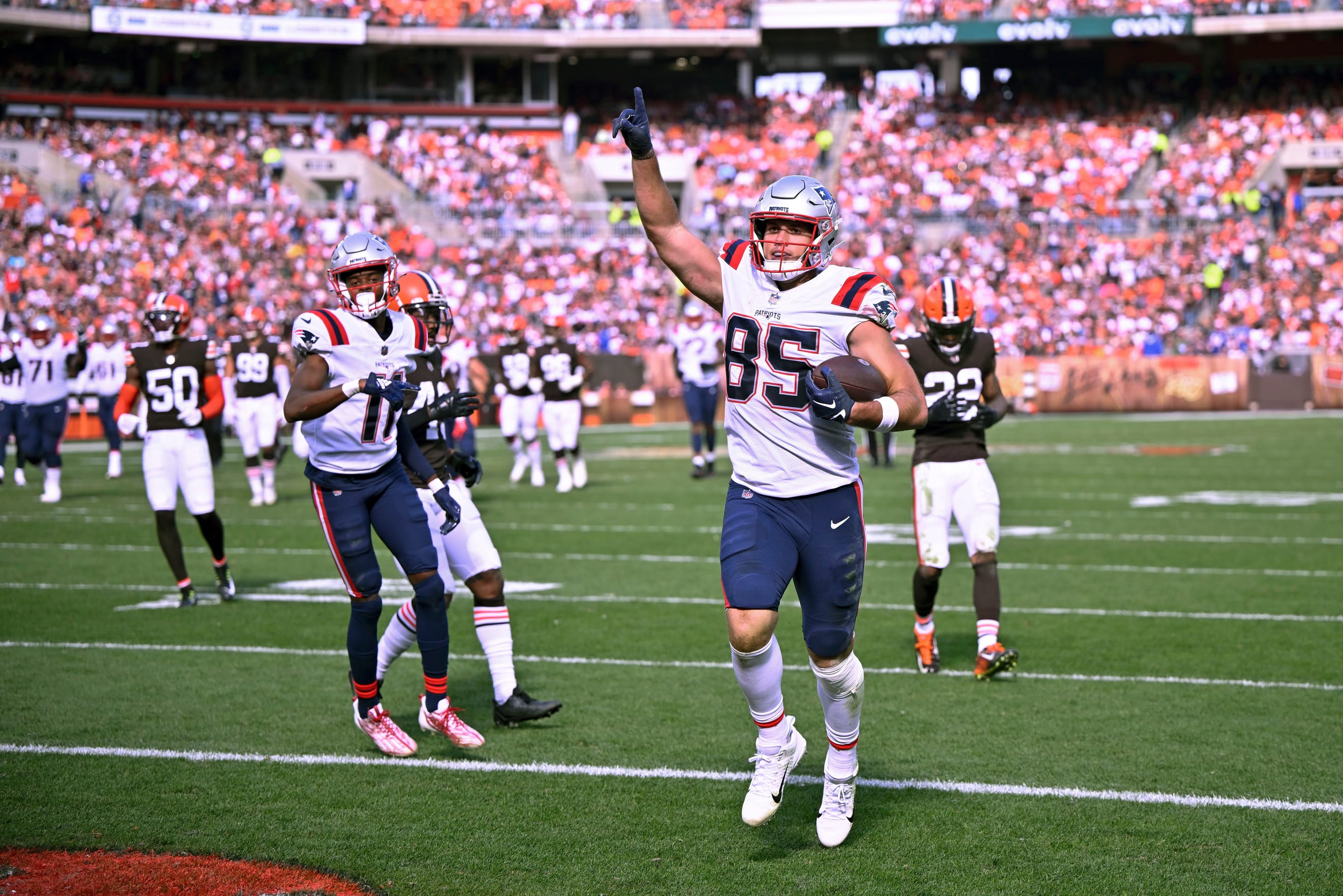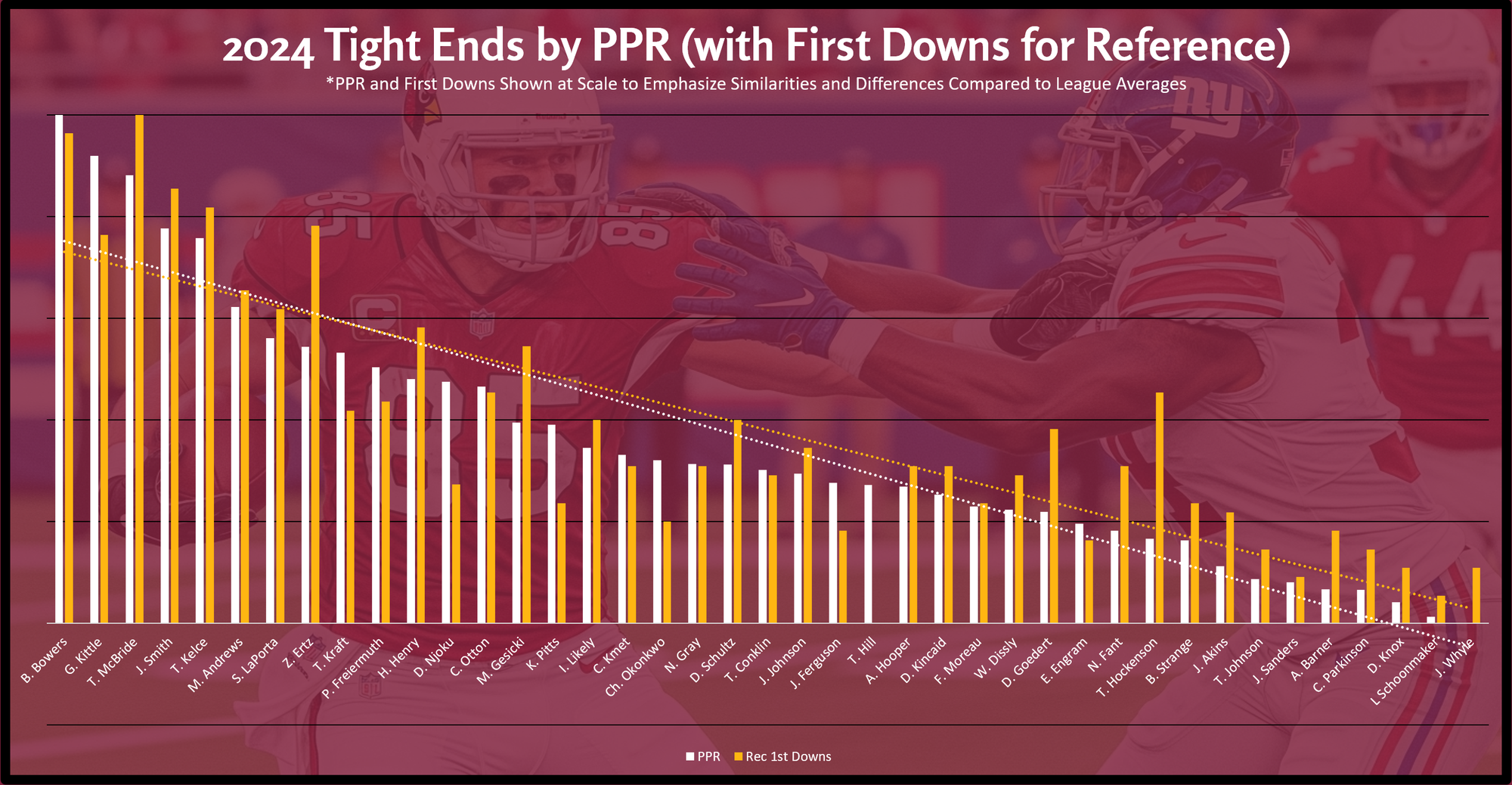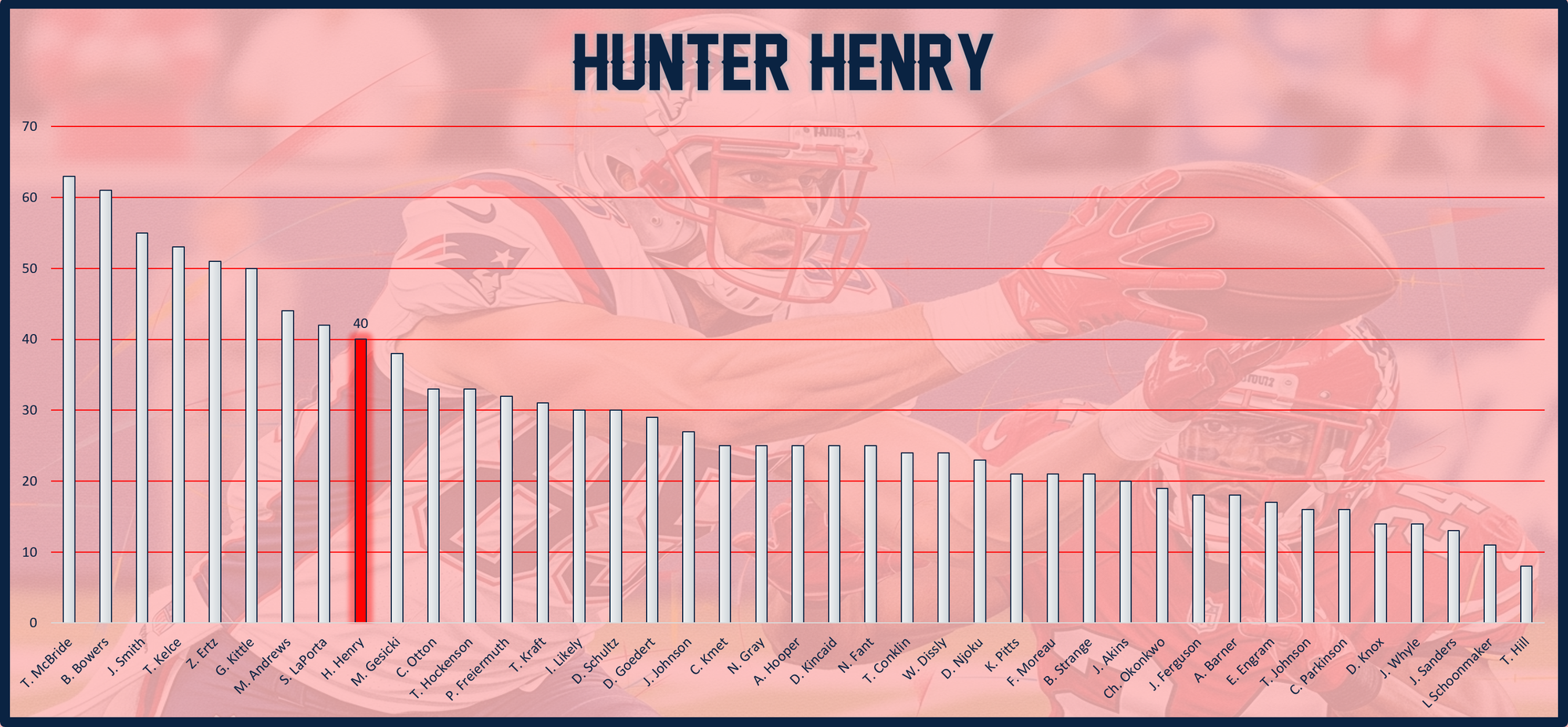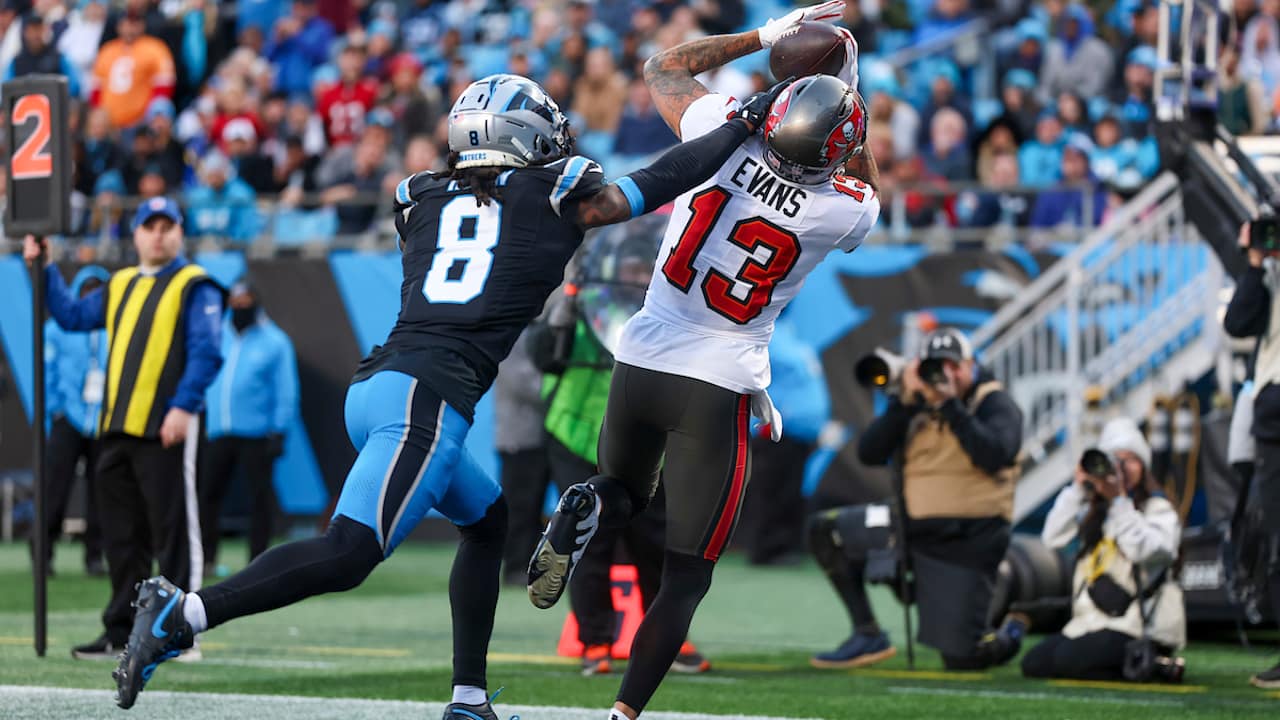
Overlooked Stats: Chain Chasing at Tight End
In fantasy football, gaining an edge means going beyond rankings and uncovering predictive stats that go overlooked. Legacy stats like receptions, yards, and past PPR output are solid but are also low-hanging fruit. Every bushy-haired grandpa with a fantasy football magazine who enters your draft room uses these. That means they make poor tools for beating your league despite excellent signal.
The real advantage lies in digging deeper and identifying underutilized metrics that indicate future scoring spikes. The trick is spotting trends others miss—finding what actually predicts fantasy points before the rest of your league catches on.
PEARSON CORRELATION COEFFICIENTS
Pearson correlation coefficients are simple to calculate and measure the relationship between two variables, ranging from +1 to -1. With TEs in fantasy football, values over 0.4 indicate a meaningful signal; over 0.6 is highly significant. With tools from sites like RotoViz, PFF, or Fantasy Points, it’s easy to export large datasets and run correlations on hundreds of stats in just a few days.
A five to ten-year window strikes the right balance, as it is modern enough to reflect today’s game but deep enough for a stable dataset. I filter out players with low usage or those who missed the following season and anchor to PPR + N1 to identify forward-looking stats. Still, these parameters can vary depending on how an individual analyst sets the variables.
Correlation has limits. Stats don’t always rank in the same order from study to study, but the general strength of a stat’s signal tends to persist. We should remember to focus less on the exact sequence of the correlations’ strengths and instead on whether a stat is consistently predictive from year to year.
Today, we’ll take a look at first downs among TEs.
FIRST DOWNS AS A PREDICTIVE INDICATOR FOR TIGHT ENDS
For this study, I examined 180 stats from RotoViz, PFF, Fantasy Points, ESPN, and NextGen Stats. Many metrics overlapped—targets, for instance, appear on every platform and correlate closely, even if minor discrepancies exist due to differing definitions of what a target actually is. So, while I included every qualifying statistic, calling it 180 truly independent indicators would probably be misleading. Still, there’s plenty of unique data here, and one metric that stood out among fantasy TEs was first downs.
As I covered with WRs back in May, both PFF and Fantasy Points track first downs, and as they were with WRs, they’re among the most correlated stats to PPR +N1 among TEs as well.
When I covered first downs as a predictive WR metric, I highlighted that first downs on Fantasy Points carried a correlation coefficient of 0.716 to PPR +N1—the highest of any WR stat tested. That data only goes back to 2021, so it’s a small sample (the 2024 season can’t yet be included due to the lack of a +N1 season). So, while first downs appear to be the strongest WR stat by correlation, the limited timeframe makes it tough to call that definitive. That said, PFF’s ten-year WR sample still yields a strong correlation, corroborating the predictiveness of the stat on the whole.
For TEs, the trend holds. First downs rank 15th in PFF’s full ten-year dataset (r = 0.595) and jump to ninth in Fantasy Points’ three-year sample (r = 0.608). Across the board, first downs show up as one of the most predictive indicators of future fantasy success when projecting receiving production at WR or TE.

The fact that first downs are an excellent predictor of future fantasy success is easy to grasp if you think about it. A high volume of receptions is usually necessary for a high volume of first downs, but first downs also indicate a more meaningful gain than a catch that went for empty yardage. As such, first downs serve as a proxy for receptions and yards combined, both of which factor directly into PPR fantasy scoring. In a way, they’re essentially measuring the same thing as past fantasy points. Generally, past fantasy scoring is the best predictor of future fantasy scoring across all positions.
Here are some TEs who excelled in first-down production in 2024 relative to how they are viewed in 2025 according to Underdog ADP.
HUNTER HENRY
- Underdog ADP
- TE19
- 2024 First Downs
- 40 (9th in NFL)

I'm historically not a big proponent of Henry's, but he has a few things working in his favor right now in New England.
The Patriots are expected to improve under new HC Mike Vrabel, who holds a 0.545 winning percentage—14th among active HCs—and should represent a clear upgrade over Jerod Mayo, whose stint in New England left plenty to be desired.
The team also possesses one of the most promising young QBs in the league in Drake Maye, who we’re high on here at Legendary Upside. Paired with Josh McDaniels—back for his third stint in New England—the offense is set for meaningful growth.
Henry also has a strong chance to finish as one of the team’s top targets, with a plausible path to ranking second behind Stefon Diggs. That outcome isn’t set in stone; Demario Douglas, Kyle Williams, and TreVeyon Henderson are all legitimate threats to reduce his role. Still, earning a high target share is within the range of possibilities. Historically, when a TE ranks first or second on their team in targets, it’s a massive cheat code.
In any case, there's a significant gap between his ADP as TE20 and his 2024 finish in first downs, where he ranked ninth. That makes him an intriguing late-round investment.


